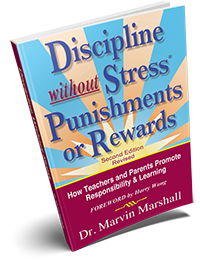
Parents and teachers often ask me questions about Discipline Without Stress, both its methodology and best practices. Following are some of the most common questions I received. I hope they help others in their quest to raise responsible children.
(Q = Question. R = Response)
Q: What would you do in the following scenario: You ask your children/students to identify the level they have chosen but they refuse to be honest and acknowledge the actual level chosen.
R: If the youngster is in the 5th or 6th grade or above, I would NOT ASK. Instead I would say, “Reflect on the level you are choosing, and consider whether you want to continue on that level or rise to a … >>>
READ MORE >>> →




